What Breed of Chicken is Lavender?
Have you ever wondered about the mysterious and beautiful lavender-colored chickens?
Well, look no further because we are here to unravel the secret!
This article explores the enchanting world of lavender chickens, shedding light on their breed, egg color, rarity, and even their friendly demeanor.
Not only that, but we also delve into the fascinating details of lavender Orpington chickens, including their availability and cost.
Whether you’re a chicken enthusiast or simply curious about these captivating creatures, this article is a must-read. Prepare to be captivated by the wonder and allure of lavender chickens!
What is a Lavender Chicken?
Lavender chickens are a type of chicken breed that are known for their distinct lavender or blueish-gray feather color.
They are not a specific breed on their own, but rather a variety of different chicken breeds that have been selectively bred to exhibit this unique coloration.
Lavender chickens can come in various sizes and have different personalities and egg-laying abilities depending on the specific breed.
Physical Appearance
The most notable characteristic of lavender chickens is their lavender or blueish-gray feather color.
This color is a result of a dilution gene that affects the pigmentation of the feathers, causing them to have a softer, pastel hue.
Lavender chickens can have varying shades of lavender, ranging from a pale gray to a deeper purple. Aside from their feather color, lavender chickens have the same physical characteristics as their respective breeds, such as size and shape.
Personality
In terms of personality, lavender chickens can vary depending on the breed they belong to. Some lavender chicken breeds are known to be friendly and docile, making them suitable for backyard flocks and family pets.
Others may have a more independent or feisty nature. It’s important to research the specific breed of lavender chicken you are interested in to get a better understanding of their temperament and compatibility with your flock.
Egg Laying Abilities
The egg-laying abilities of lavender chickens also differ based on breed. Some lavender breeds are known for their excellent egg production, laying a consistent number of eggs throughout the year.
Others may have a more modest laying rate or be considered more ornamental or show breeds. If egg production is an important criterion for you, it’s essential to choose a lavender chicken breed that is known for its egg-laying abilities.
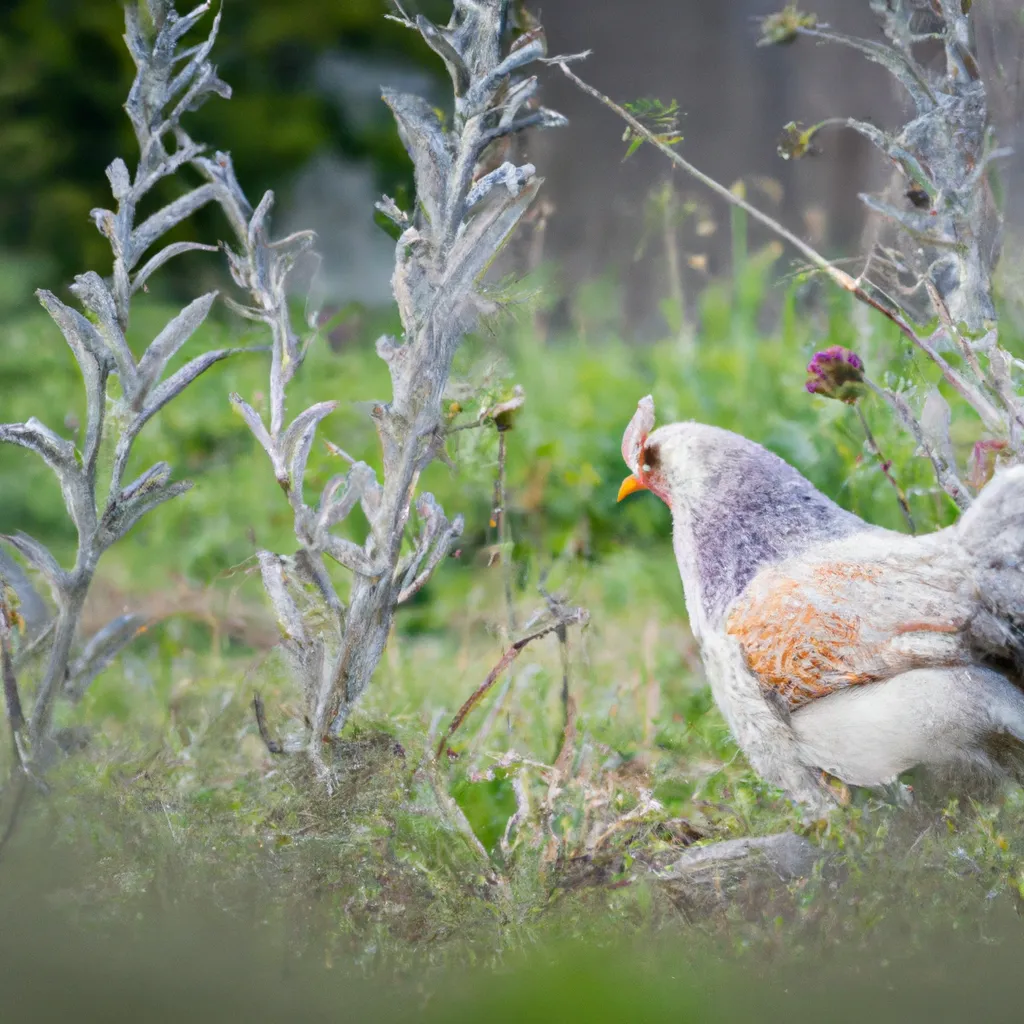
Common Characteristics of Lavender Chickens
While lavender chickens come from various breeds, they do share some common characteristics that can be attributed to their lavender coloration.
Feather Color
As mentioned earlier, the lavender or blueish-gray feather color is the most noticeable characteristic of lavender chickens.
This unique color sets them apart from other chicken breeds and adds a touch of elegance to any flock. Whether you prefer a subtle lavender hue or a deeper purple shade, lavender chickens can be a visually stunning addition to your backyard.
Size
In terms of size, lavender chickens can vary depending on the specific breed they belong to. Some lavender breeds, like the Lavender Orpington, are known for their larger size, making them suitable for meat production or as exhibition birds.
Other lavender breeds, such as the Lavender Ameraucana, are smaller in size, making them a great choice for those with limited space or looking for a compact breed.
Temperament
The temperament of lavender chickens can also vary depending on the breed. However, many lavender chicken breeds are known for being friendly and docile. This makes them an excellent choice for families with children or for those looking for chickens that are easy to handle and interact with.
Of course, individual personalities can still vary within a breed, so it’s important to spend time with your lavender chickens to observe their specific temperaments.
Popular Lavender Chicken Breeds
Several chicken breeds have lavender varieties or strains that are highly sought after by poultry enthusiasts. Here are three popular lavender chicken breeds:
Lavender Orpington
The Lavender Orpington is a variety of the Orpington breed that is prized for its beautiful lavender feather color. Orpingtons, in general, are known for being gentle giants with a calm and friendly demeanor, and the lavender variety is no exception.
These chickens have a larger size, making them excellent for meat production and dual-purpose capabilities. They also make lovely exhibition birds due to their eye-catching lavender plumage.
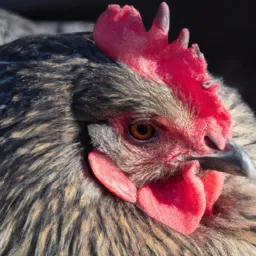
Lavender Ameraucana
The Lavender Ameraucana is a lavender variety of the Ameraucana breed, which is known for its blue eggs.
These chickens have a smaller size compared to some other breeds, making them suitable for backyard flocks with limited space. Lavender Ameraucanas have a sweet and docile temperament, making them great for families.
Along with their unique feather color, these chickens lay beautiful blue eggs, adding an extra touch of color to your egg basket.
Lavender Wyandotte
The Lavender Wyandotte is a variety of the Wyandotte breed that exhibits the stunning lavender feather color.
Wyandottes, in general, are known for their striking feather patterns and friendly personalities, and the lavender variety is no exception.
These chickens have a medium size, making them suitable for both meat and egg production. Lavender Wyandottes are known to be calm and easygoing, making them a great addition to any backyard flock.
Lavender Orpingtons
Background and History
Lavender Orpingtons are a variety of the Orpington breed, which originated in England in the late 1800s.
The Orpington breed was developed by William Cook, who aimed to create a chicken that was both aesthetically pleasing and productive.
See also The Health Benefits of Adding Pullet Eggs to Your Diet
The Lavender Orpington variety is a relatively recent addition to the breed, with breeders selectively breeding for the lavender feather color while maintaining the desirable traits of the Orpington breed.
Physical Traits
Lavender Orpingtons have all the same physical traits as the standard Orpington breed, with the added unique lavender feather color.
They have a large and robust build with a broad body and a low stance. Their feathers are soft and abundant, providing insulation and making them suitable for colder climates. Lavender Orpingtons also have a single comb, medium-sized wattles, and white earlobes.
Care and Maintenance
Lavender Orpingtons, like other Orpington varieties, are relatively easy to care for.
They are cold-hardy, making them suitable for areas with colder climates.
These chickens require adequate shelter and protection from predators, as they are not particularly agile flyers.
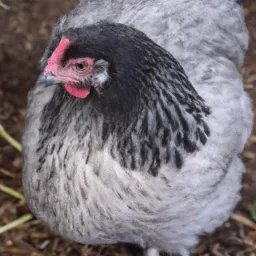
Regular feeding and access to fresh water are essential for their proper health and well-being. It’s also important to keep their living quarters clean and provide appropriate roosting and nesting areas.
Availability and Price
Due to their growing popularity, Lavender Orpingtons can be found from various breeders and hatcheries. However, they may be less common or even rare compared to standard Orpingtons or other chicken breeds.
The price of Lavender Orpingtons can vary depending on the breeder, location, and availability. On average, you can expect to pay anywhere from $10 to $30 per chick or pullet, with prices potentially higher for show-quality or breeding stock.
Lavender Ameraucanas
Origins
Lavender Ameraucanas, also known as Lavender Easter Eggers, are a lavender variety of the Ameraucana breed.
Ameraucanas themselves are a relatively new breed that was developed in the United States in the 1970s. They were created by crossing various blue-egg-laying chicken breeds to achieve a consistent blue egg color.
Lavender Ameraucanas were then selectively bred to exhibit the unique lavender feather color while retaining the blue egg-laying trait.
Appearance
Lavender Ameraucanas have the same physical characteristics as other Ameraucana breeds, with the addition of the lavender feather color. They have a medium size with a stout and upright posture.
Their bodies are well-rounded, and they have a medium-sized pea comb. The lavender feather color is present throughout their plumage, including their head, neck, back, wings, and tail.
It’s important to note that Lavender Ameraucanas can exhibit variations in the shade of lavender, ranging from a lighter pastel hue to a deeper purple.
Temperament
Lavender Ameraucanas, like other Ameraucana varieties, are known for their calm and friendly temperament.
They are generally easy to handle and can be quite docile, making them suitable for families or novice chicken keepers. These chickens are known to be sociable and can get along well with other flock members. Their friendly nature also makes them enjoyable to interact with and observe.
Egg Laying
One of the primary reasons people are drawn to Ameraucanas, including the lavender variety, is their ability to lay blue eggs. Lavender Ameraucanas lay eggs with varying shades of blue, ranging from a light sky blue to a deeper turquoise.
The egg color is a result of a pigment called oocyanin, which is deposited on the eggshell during the laying process.
While individual laying rates can vary, on average, Lavender Ameraucanas lay around 200 to 250 eggs per year.
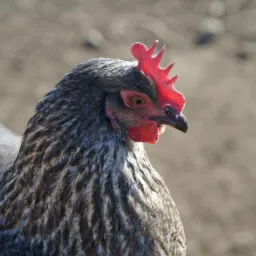
Lavender Wyandottes
Origin
Lavender Wyandottes are a variety of the Wyandotte breed, which was developed in the United States in the late 1800s.
The breed was created through the crossing of various chicken breeds, including the Dark Brahmas, Cochins, and Silver Spangled Hamburgs.
The Lavender Wyandotte variety is a result of selective breeding to achieve the lavender feather color while maintaining the desirable traits of the Wyandotte breed.
Physical Features
Lavender Wyandottes have all the physical characteristics of the standard Wyandotte breed, with the addition of the lavender feather color.
They have a medium size with a rounded body and a short, broad back. Their feathering is abundant and well-rounded, providing them with insulation and making them suitable for colder climates. Lavender Wyandottes have a rose comb, which is a low-lying comb made up of multiple small points.
Behavior
Lavender Wyandottes, like other Wyandotte varieties, are known for their calm and gentle demeanor.
They are typically friendly and sociable, making them easy to handle and interact with. Lavender Wyandottes can get along well with other flock members and are not usually aggressive.
However, individual personalities can vary, so it’s important to monitor their behavior and introduce them to the flock gradually if needed.
Egg Laying Potential
Lavender Wyandottes are considered good layers, known for their consistent egg production.
They lay medium-sized brown eggs, which are favored by many backyard chicken keepers. While individual laying rates may vary, on average, Lavender Wyandottes can lay between 200 to 250 eggs per year.
Providing them with a nutritious diet and optimal nesting conditions can help maximize their egg-laying potential.
Egg Laying Abilities of Lavender Chickens
Egg laying abilities can vary among lavender chicken breeds. Here are a few key factors to consider when it comes to the egg-laying capabilities of lavender chickens.
Breeds with Good Egg Production
Some lavender chicken breeds are known for their excellent egg-laying abilities.
For example, Lavender Ameraucanas are sought after for their blue eggs and can lay around 200 to 250 eggs per year. Lavender Wyandottes are also known to be good layers, producing medium-sized brown eggs.
See also Everything You Need to Know About Leghorn Chicken Care
It’s important to research the specific breed of lavender chicken you are interested in to determine its egg-laying potential.
Size and Color of Eggs
Lavender chickens can lay eggs of varying sizes and colors depending on the breed. Lavender Ameraucanas, for instance, lay medium-sized blue eggs, which are a popular choice among egg enthusiasts.
Lavender Wyandottes, on the other hand, lay medium-sized brown eggs. Consider your preference for egg size and color when selecting a lavender chicken breed for your flock.
Average Egg Laying Rate
The average egg-laying rate of lavender chickens can vary depending on the breed and individual factors.
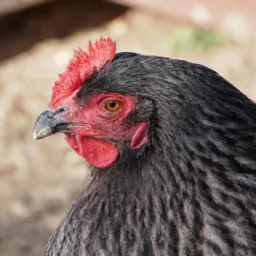
While some lavender breeds may lay around 200 to 250 eggs per year, others may have a more modest laying rate. It’s important to keep in mind that factors such as age, health, diet, and environmental conditions can also influence egg production.
Providing proper nutrition, a comfortable living environment and regular veterinary care can help optimize egg production.
Caring for Lavender Chickens
Caring for lavender chickens is similar to caring for other chicken breeds. Here are some key aspects to consider when it comes to the care and maintenance of lavender chickens.
Housing and Space Requirements
Lavender chickens require appropriate housing and space to thrive.
They should have a well-ventilated coop that protects them from extreme weather conditions and predators. The coop should provide enough space for the chickens to move around comfortably, as overcrowding can lead to stress and health issues.
Additionally, a secure outdoor run or free-ranging area allows them to engage in natural behaviors and obtain exercise.
Feeding and Nutrition
Providing a balanced and nutritious diet is essential for the health and well-being of lavender chickens. They should have access to clean water at all times, as dehydration can be detrimental to their health.
A commercially prepared chicken feed that is appropriate for their age and life stage is a good foundation.
Supplementing their diet with fresh fruits, vegetables, and protein-rich treats can also provide added nutrition. It’s important to avoid feeding them toxic or harmful substances, such as spoiled food or toxic plants.
Healthcare Needs
Lavender chickens, like all chickens, require regular healthcare to prevent and address potential health issues. This includes vaccinations, routine check-ups, and proper parasite prevention and control.
Regular cleaning and maintenance of their living quarters are essential to prevent the buildup of bacteria or parasites. It’s also important to observe your lavender chickens for any signs of illness or distress and seek veterinary assistance if needed.
Lavender Chickens in Backyard Flocks
Adding lavender chickens to your backyard flock can have several benefits, but it also comes with some challenges. Here are some considerations when it comes to including lavender chickens in your flock.
Benefits of Adding Lavender Chickens to Your Flock
Lavender chickens can be a unique and visually appealing addition to your backyard flock.
Their lavender or blueish-gray feather color adds diversity and interest to your flock’s visual aesthetics. Lavender chickens, such as Lavender Ameraucanas, can lay beautiful blue eggs, adding an extra element of color to your egg basket.
Adlso, their docile and friendly temperaments make them enjoyable to interact with and handle.
Challenges in Raising Lavender Chickens
Raising lavender chickens can also come with some challenges. One of the main challenges is finding reputable breeders or hatcheries that offer lavender chicken breeds.

Due to their popularity and relative rarity, finding lavender chickens may require more effort and research compared to more common breeds. Additionally, the cost of lavender chickens can be higher than standard varieties or other chicken breeds.
Care must also be taken to ensure the health and genetic integrity of the lavender chicken breeds, as dilution genes can sometimes lead to weaker individuals or health issues.
Lavender chickens are a unique and visually stunning addition to any backyard flock.
While lavender chickens themselves are not a specific breed, they can be found in several popular breeds such as Lavender Orpingtons, Lavender Ameraucanas, and Lavender Wyandottes.
These chickens exhibit a distinctive lavender or blueish-gray feather color that sets them apart. They also have varying temperaments, sizes, and egg-laying abilities depending on the specific breed.
Caring for lavender chickens involves providing appropriate housing, a balanced diet, and regular healthcare. Adding lavender chickens to your flock can bring visual interest, colorful eggs, and friendly personalities. However, it’s important to be aware of the challenges in finding and raising lavender chickens.
With proper care and attention, lavender chickens can thrive and become a beloved part of your backyard flock.
Considerations for Choosing Lavender Chickens
When choosing lavender chickens for your flock, consider factors such as:
- Your personal preferences for feather color, egg color, and temperament.
- The specific breed’s size and space requirements.
- The breed’s egg-laying abilities and productivity.
- The availability and reputation of breeders or hatcheries.
- The cost and potential challenges in raising lavender chickens.
- Your ability to provide appropriate care, nutrition, and healthcare for lavender chickens.
By carefully considering these factors, you can select the lavender chicken breed that best suits your preferences and needs.
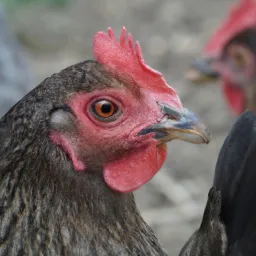
Whether you choose Lavender Orpingtons, Lavender Ameraucanas, or Lavender Wyandottes, adding Lavender chickens to your flock can be a delightful and rewarding experience.
